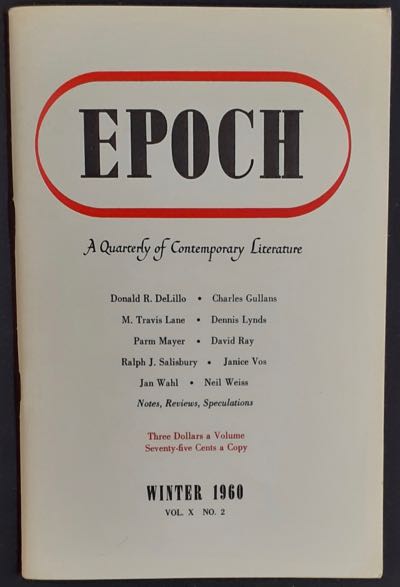
This page lists Don DeLillo's stories; most recent on top. But here's the cover of the Epoch volume where his first story appeared:

Note: This listing does not include published pieces which were included whole (or with very minimal changes) in one of the novels. Please refer to the bibliography page for full publishing details of the stories, including known reprints, as well as a separate listing of the pieces which are excerpts from a novel.
First published in the New Yorker Aug 7-14, 2017 issue, and online.
This is how near-sleep attenuates a person’s awareness. Everything else is gone. He is funnelled into himself, no past or future, the living itch, man-shaped, Robert T. Waldron, thinking incoherently, a body in a bedsheet.

Scribner published a collection of DeLillo stories in November, 2011, entitled The Angel Esmeralda: Nine Stories, drawn from the years 1979-2011.
Contents:
First published in Granta 117: Horror, Autumn 2011.
First published in Harper's December 2010 issue, pp. 63-74. Not really on the web at: Harper's archive. Accompanied by a Jason Fulford photo looking down on a few blurred cars on a highway.
Billed on the tearaway cover as "in white collar jail with Don DeLillo".
First published in New Yorker 30 November 2009 issue, pp. 68-77. On the web at: http://www.newyorker.com/fiction/features/2009/11/30/091130fi_fiction_delillo.
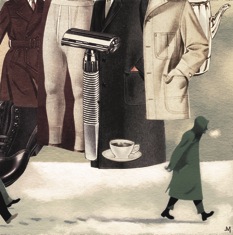
Two college boys track an old man in his winter coat (or is it a parka?), spinning many tales about who this man might be.
First published in New Yorker 1 April 2002, pp. 78-82.
A man and a woman meet at a museum, in a gallery of Gerhard Richter paintings of the dead Baader-Meinhof group. The story seems to concern the terrorism that strangers can do to each other, the terror of living in the modern state, along with some reactions to 'political art.' Seemingly inspired from the "Gerhard Richter: Forty Years of Painting" show that is up at the Museum of Modern Art in NYC thru May 21, 2002. Per The New Yorker the show includes a "fifteen-canvas masterpiece of history painting, about the deaths in 1977 of Baader-Meinhof terrorists who had convulsed Germany for a decade."
First published in Esquire, May 1994, pp. 100-109.
A story set in the Bronx in the present-day, this is the story of an ancient nun, Sister Edgar, a younger nun Sister Grace, who with graffiti-artist Ismael and his gang help feed the poor, and the little homeless girl Esmeralda. This story was worked into Underworld, with many changes (see pages 237-51; 810-24)
In the Best American Short Stories 1995 reprint (p. 338), DeLillo comments on the story:
This story began with the idea of a face on a billboard. I knew at once that the face was an apparition of someone sainted or otherwise dead, and that crowds would gather to see the face, and that the face would drift in and out of the graphic art on the billboard, and the other thing I knew was that the face would be a woman's or a girl's. All this happened years before I wrote the story. The story is everything else. It's the ten thousand things I saw, heard, made up, and threw together to get me to the face on the billboard.
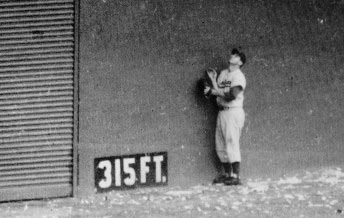
First published in Harper's, Oct. 1992, pp. 35-70.
A story set at the Giants-Dodgers pennant game in 1951 at the Polo Grounds in New York. Pafko is the left fielder for the Dodgers, and at the end of the game he is left standing at the base of the wall as Bobby Thomson's home run goes into the lower deck. Watching in the stands are Frank Sinatra, J. Edgar Hoover, Jackie Gleason, and others. This novella went on to form the prolog of DeLillo's novel Underworld, with a new title "The Triumph of Death" and a few changes and additions. To make things more confusing, the Underworld version was then released as a separate hardcover edition by Scribner in 2001, with the original title of 'Pafko at the Wall,' presumably to tie into the 50th anniversary of the event.
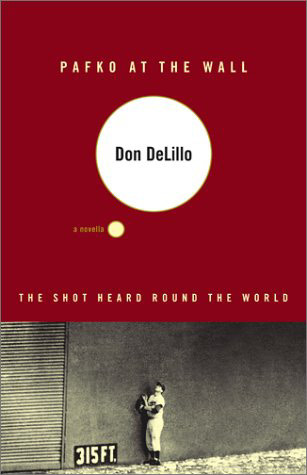
First published in Harper's, Sept. 1988, pp. 61-63.
A young man is running laps around a small park, when a kidnapping occurs. Explores the idea that a rationally motivated crime seems to be easier to live with than a random act.
First published in Granta 25, Autumn 1988, pp. 199-212.
A story set in Athens during a period of earthquakes, this story tracks the jitters of Kyle and Edmund, two young expat teachers. The ivory acrobat is a "reproduction of an ivory figurine from Crete, a bull-leaper, female, her body deftly extended with tapered feet nearing the topmost point of a somersaulting curve," a gift that Edmund gives to Kyle.
First published in Esquire, July 1983, pp.118-126.
Online at: Granta.
A first person story told by an astronaut, in orbit around the Earth, accompanied by Vollmer, in which they both discover the human moments while a non-nuclear WWIII rages down below.
This one gets Keesey's vote for DeLillo's best short story.
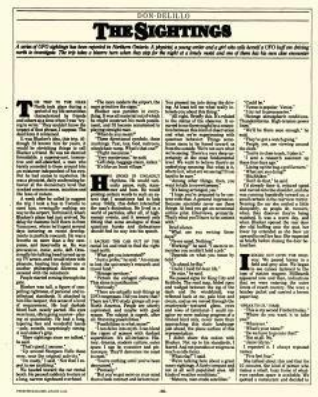
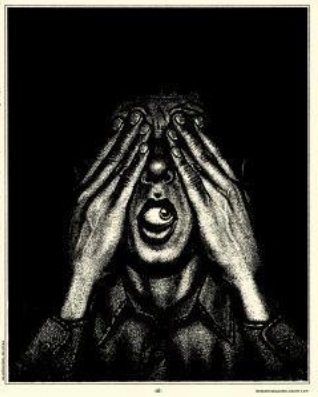
First published in Weekend Magazine (Summer Fiction Issue), August 4, 1979, pp. 26-30. A supplement to many newspapers in Canada, such as Ottawa Journal.
The story lead-in: "A series of UFO sightings has been reported in Northern Ontario. A physicist, a young writer and a girl who calls herself a UFO buff are driving north to investigate. The trip takes a bizarre turn when they stop for the night at a lonely motel and one of them has his own close encounter."
This story strikes me as related to The Body Artist in some way; it's a short exploration of the unknowable yet experience-able, in this case the writer/narrator has a UFO experience. The physicist persues a very rational investigation of the UFO phenomenon, asking about size and shape and duration. But the girl asks him "How do you feel now?" and the narrator says "I feel convinced, that's how I feel."
First published in Antaeus No. 33, Spring 1979, pp. 32-46.
A couple are stranded on an island, trying to fly back home. They meet Christa, a German woman also stranded, who says she has "a desire to go unnoticed," "to be indistinct.". The wife is able to get a seat on a plane out, leaving behind her husband. He and Christa remain at the hotel on the island, they have an affair. Relates to themes of Great Jones Street and Mao II.
First published in Sports Illustrated, Nov. 27, 1972, pp. 98-101+. The full text is online at: SI Vault via Internet Archive.
Here's the lead in from the magazine:
"Action is his passion. It is Saturday noon and his bets
are down on contests coast to coast. With the blinds drawn, two
televisions tuned and a radio fitfully broadcasting game scores,
the tense vigil begins." As the title indicates, things do
not go well for the gambler.
First published in Esquire, Dec. 1971, pp. 174-177, 243, 246.
A very baroque tale of a police officer who dresses in women's clothing and is on the streets of Times Square from midnight to six am, on the anniversary of St. Thomas More's beheading. While on his rounds, he is known as Lady Madonna, and he runs into such characters as "Burgo Swinney, the eunuchoid pornographer," and "Longjaw Ed Jolly, a man who claimed to be the last living member of the Castrated Priests of Cybele, a self-mutilation cult."
First published in Carolina Quarterly 22, 1970, pp. 4-11.
Here's a bit more background on the story from DeLillo.
This is a story inspired by Godard's Weekend. It concerns a multinational band of terrorists who kill practically everyone they come into contact with, including a brightly clad group of golfers. Jean-Claude is the theoretician of the bunch; as well as filming the band's exploits, he stresses the importance of the group's uniforms. Explores some of the filmmaking themes of Americana. After setting a woman on fire with lighter fluid, we learn that "Jean-Claude had learned the lighter fluid trick from his father, who had been in the hills with Bunuel when the latter had declared that the days of the slow dissolve were numbered." The true revolutionaries are filmmakers?
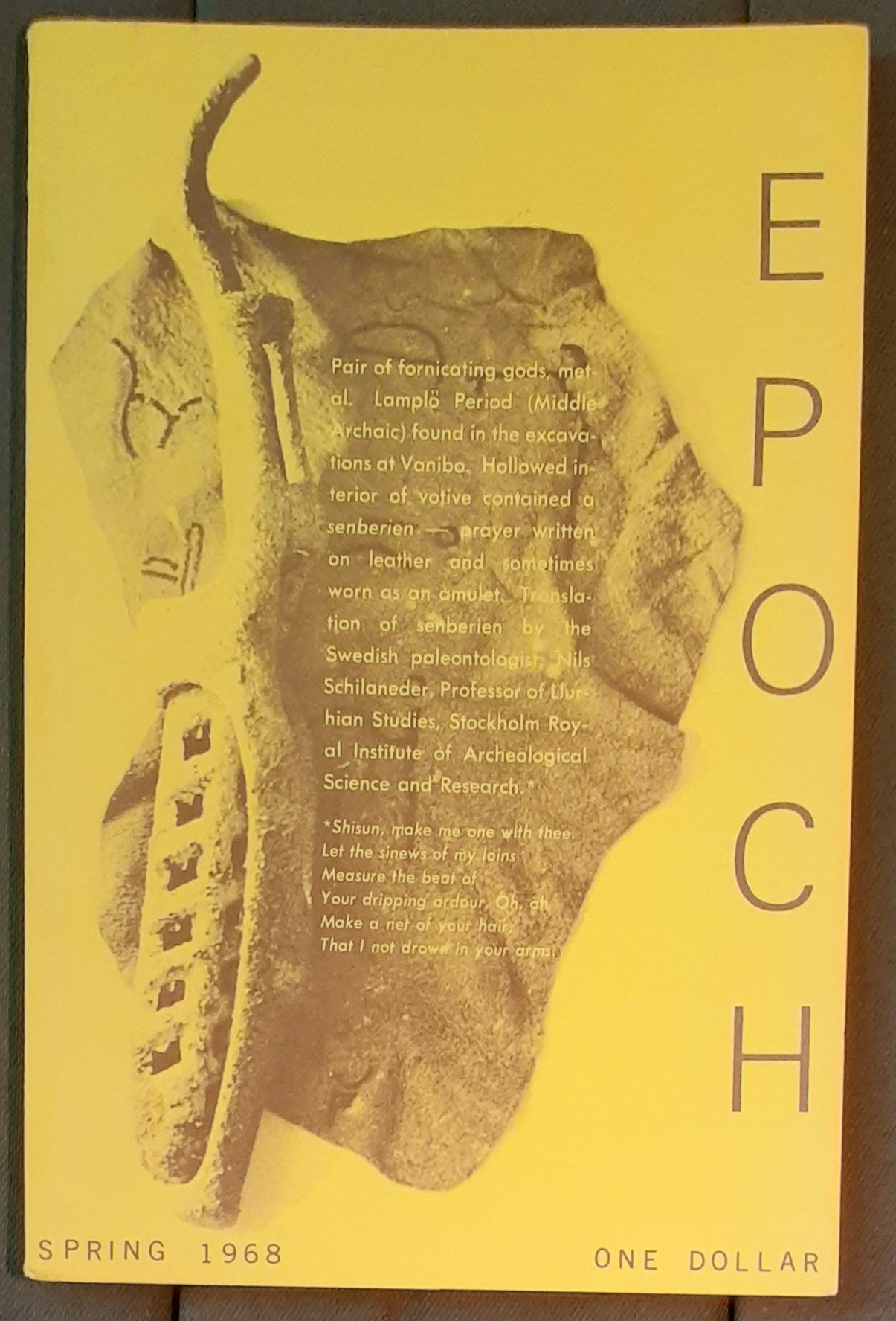
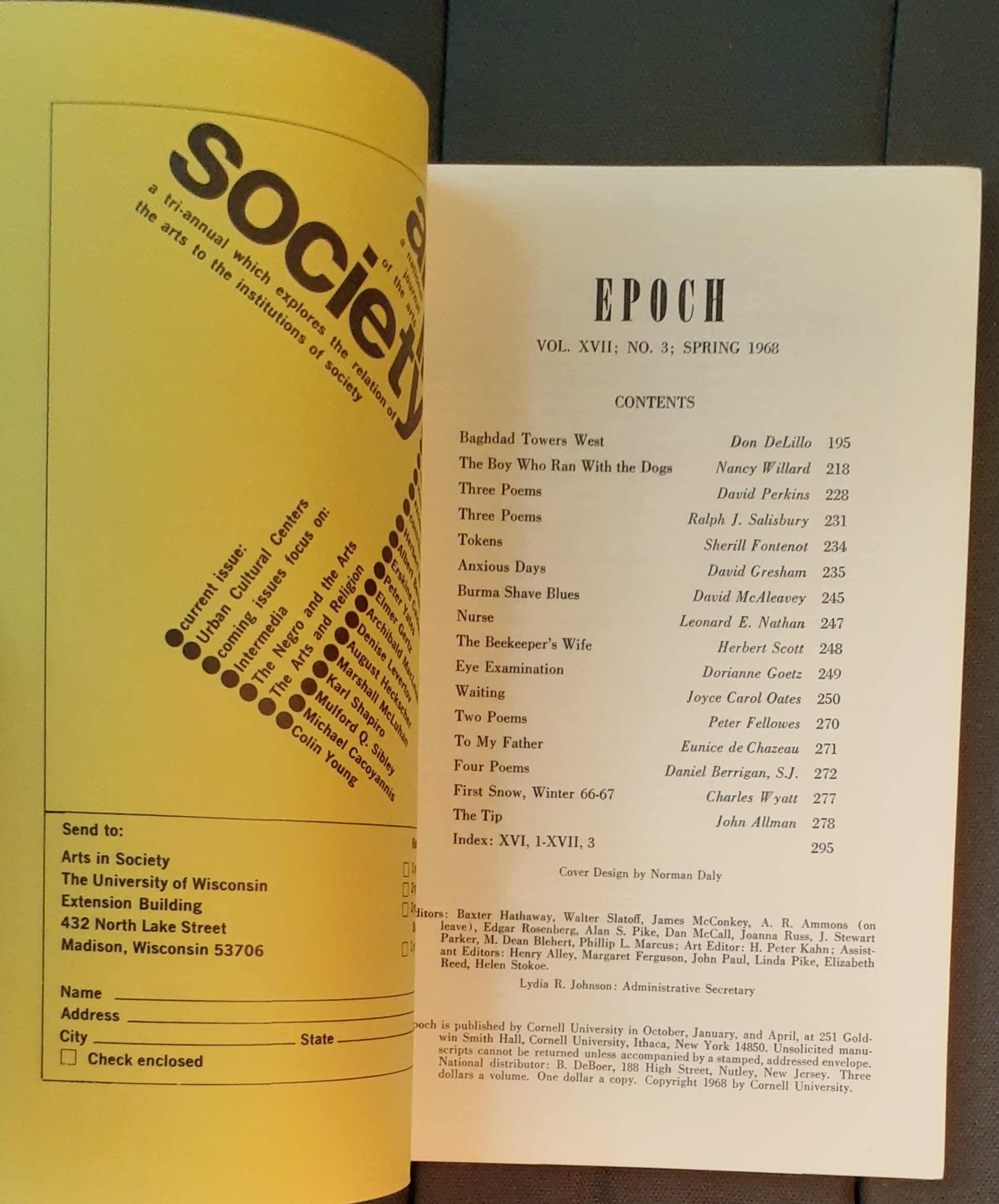
First published in Epoch Vol. 17, No. 3 (Spring 1968), pp. 195-217.
The first of the stories to be in the first person, this was probably written while Americana was underway, and has a somewhat similar feel. The narrator has taken over an apartment in the garish high-rise Baghdad Towers West on 72nd St, and he reminisces about the three young women who had previously lived there. "Caroline was one of the pacesetters in junk." "Melinda Bird is the tiny enthusiastic type of girl who speaks in awed shivers about New York," and wants to be an actress. Robin is from England, and "she came to America to model high fashion clothing and become rich and famous." The narrator has gotten himself "fired from my job for what the company chairman termed 'massive indifference,'" and he nows prefers to spend his time sleeping.
First published in Kenyon Review Vol. 28, No. 3 (June 1966), pp. 391-394. As of Nov. 2013, online at the KR site.
This story is a mock summary of artsy movies about young people, along the lines of Godard's Masculin-Feminin. An excerpt: "They are in his small room drinking wine. Her eyes are lovely. The boy is talking. He is being bitter about something. Eventually it becomes clear. It's the world. He is being bitter about the world. He chain-smokes and drinks a lot of wine. It is Greenwich Village or the West Side. It is either of those or it is Soho or it is Montmartre."
First published in Epoch 14, No. 3 (Spring 1965) pp. 244-250.
Fifty four year old Santullo's been thrown out of his Bronx apartment; he's sitting on an armchair along with the rest of the furniture, out on the sidewalk. Old man D'Annunzio happens along, and the two bitch awhile before getting down to the main question: "What would you eat if you could have only one thing to eat for the rest of your life?"
First published in Epoch 12, No. 1 (Spring 1962) pp. 9-25.
Thirty eight year old Cavallo of the Bronx, the son of Italian immigrants, has reached rock bottom. He's lost his wife, the landlord is demanding rent money, and the loansharks are after him. He descends into the subways, spending a hellish weekend riding the rails.
First published in Epoch 10, No. 2 (Winter 1960), pp. 105-120.
Emil Burke, the seventy year old leader of the Psychic Church of the Crucified Christ on Ninth Ave., wants to save the sinners. But as one compatriot tells him, "Their River Jordan ... is a parking space, a movie with much shooting of guns and much grinding of thighs, and a bag of popcorn, buttered."